Pole Mounted Distribution Transformer: Revolutionizing Rural Electrification with Smart Grid Integration?
Have you ever wondered how remote villages get electricity? The answer might be hanging right above your head. Pole mounted distribution transformers are changing the game in rural electrification.
Pole mounted distribution transformers are revolutionizing rural electrification by integrating smart grid technologies. These transformers combine traditional reliability with advanced features, enabling efficient power distribution and management in remote areas previously underserved by conventional grid systems.
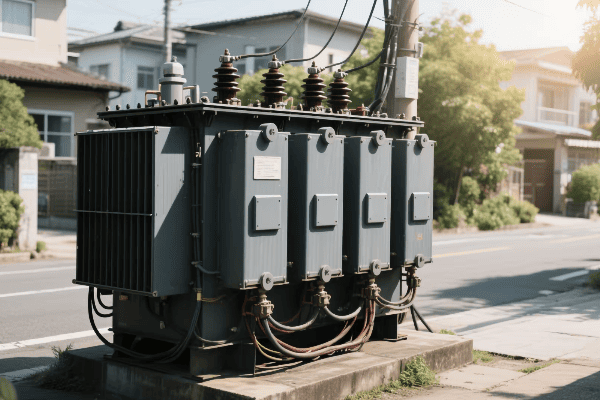
As someone who’s worked in the power industry for years, I’ve seen firsthand how these transformers are making a difference. Let’s explore how pole mounted distribution transformers are reshaping the landscape of rural power distribution.
Rural Power Evolution: Enhancing Electricity Access with Advanced Pole Mounted Technology?
Ever thought about the challenges of bringing power to remote areas? Advanced pole mounted technology is solving problems we once thought insurmountable.
Advanced pole mounted technology enhances rural electricity access by overcoming geographical barriers and infrastructure limitations. These transformers offer improved reliability, efficiency, and smart grid capabilities, making quality power distribution possible even in the most remote locations.
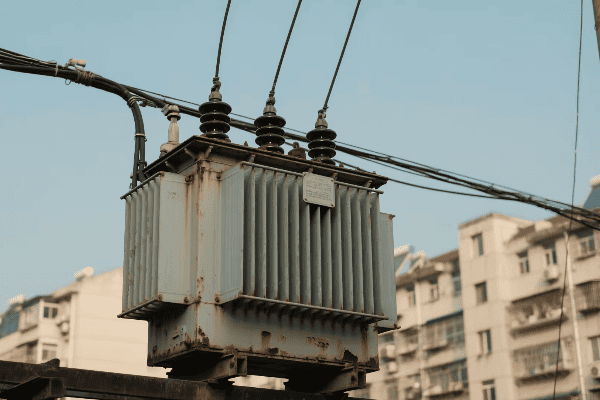
Let’s dive into how this technology is evolving rural power distribution:
Improved Reliability
Keeping the lights on in challenging environments:
- Enhanced protection against lightning strikes and surges
- Weather-resistant designs for extreme conditions
- Self-healing capabilities to isolate faults and restore power quickly
Increased Efficiency
Making every watt count:
- Low-loss core materials to reduce energy waste
- Optimized winding designs for better power transfer
- Smart load management to balance demand across the network
Remote Monitoring and Control
Managing power from afar:
- Real-time data transmission on transformer health and performance
- Remote diagnostics to identify issues before they cause outages
- Ability to adjust settings without on-site visits
Scalability and Flexibility
Adapting to growing rural needs:
- Modular designs for easy capacity upgrades
- Compatibility with renewable energy sources like solar and wind
- Support for microgrids and islanded operation
Environmental Considerations
Powering responsibly:
- Use of biodegradable oils to minimize environmental impact
- Reduced noise pollution for quieter rural environments
- Compact designs to minimize visual impact on landscapes
| Feature | Rural Benefit | Impact on Electrification |
|---|---|---|
| Improved Reliability | Fewer outages | Enhanced quality of life |
| Increased Efficiency | Lower energy losses | More power available to users |
| Remote Monitoring | Quick issue resolution | Reduced maintenance costs |
| Scalability | Adaptable to growth | Future-proof infrastructure |
| Environmental Design | Minimal ecological impact | Sustainable rural development |
I remember a project in a remote mountain village that had struggled with unreliable power for decades. We installed advanced pole mounted transformers with remote monitoring capabilities. Within months, the change was dramatic. The local school principal told me, "For the first time, our computers run without interruption. It’s opening up a world of online learning for our students."
Another eye-opening experience was in a coastal community prone to severe storms. We implemented self-healing transformer networks. During the next big storm, the system automatically isolated faults and rerouted power. What would have been a week-long blackout was reduced to brief, localized outages. A resident remarked, "It’s like our power grid has become storm-proof overnight."
These experiences have shown me that advanced pole mounted technology is more than just an upgrade to rural power systems. It’s a lifeline, bringing reliable, efficient, and smart power to areas that have long been underserved. As we continue to innovate in this field, we’re not just electrifying rural areas; we’re empowering communities and opening doors to new opportunities that were once thought impossible in remote locations.
Smart Integration: Bridging the Gap Between Traditional Grids and Modern Rural Networks?
Have you ever wondered how we can bring cutting-edge smart grid technology to remote areas? The answer lies in the smart integration capabilities of modern pole mounted transformers.
Smart integration in pole mounted transformers bridges the gap between traditional grids and modern rural networks by incorporating advanced communication and control features. These transformers act as intelligent nodes, enabling data-driven grid management and paving the way for smart rural electrification.
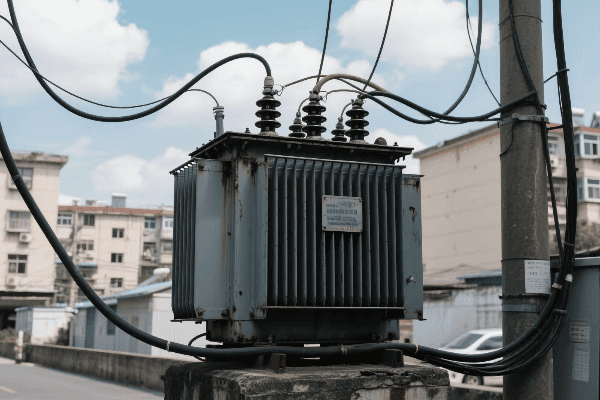
Let’s explore how these transformers are making rural grids smarter:
Advanced Communication Capabilities
Connecting the rural grid:
- Built-in cellular or satellite communication modules
- Real-time data exchange with central control systems
- Integration with IoT platforms for comprehensive grid monitoring
Intelligent Power Management
Optimizing rural energy distribution:
- Automated load balancing to prevent overloads
- Voltage regulation to maintain power quality
- Demand response capabilities to manage peak loads
Data Analytics and Predictive Maintenance
Staying ahead of issues:
- AI-driven analysis of transformer performance data
- Predictive algorithms to forecast potential failures
- Optimization of maintenance schedules based on real-time insights
Renewable Energy Integration
Supporting green rural power:
- Ability to handle bidirectional power flow from solar and wind sources
- Smart inverter coordination for stable grid operation
- Energy storage management for improved reliability
Cybersecurity Features
Protecting rural power infrastructure:
- Encrypted communications to prevent unauthorized access
- Intrusion detection systems to identify potential threats
- Regular security updates to address evolving risks
| Smart Feature | Traditional Grid Limitation | Modern Rural Network Benefit |
|---|---|---|
| Advanced Communication | Limited visibility | Real-time grid awareness |
| Intelligent Management | Manual load balancing | Automated efficiency optimization |
| Data Analytics | Reactive maintenance | Proactive issue prevention |
| Renewable Integration | One-way power flow | Flexible, green energy support |
| Cybersecurity | Vulnerable to attacks | Robust digital protection |
I recall a project in a rural area where we were integrating these smart transformers into an aging grid. The local utility was skeptical about the investment. But within months, the benefits were clear. They could now detect and resolve issues before they led to outages. The utility manager told me, "It’s like we’ve gone from flying blind to having a high-tech control tower. We can see and manage everything."
Another fascinating experience was in a farming community embracing solar energy. The smart transformers we installed could handle the variable input from solar panels while maintaining grid stability. During a sunny week, the community became a net energy exporter. A farmer proudly said, "Our fields are now growing both crops and electricity."
These experiences have shown me that smart integration in pole mounted transformers is not just about adding technology to the grid. It’s about transforming rural power networks into intelligent, responsive systems. By bridging the gap between traditional infrastructure and modern smart grid capabilities, we’re not just improving power distribution; we’re enabling rural communities to participate fully in the energy revolution. This smart integration is key to creating resilient, efficient, and future-ready rural power systems that can support the growing needs of remote areas.
Overcoming Rural Challenges: Innovative Solutions in Pole Transformer Design?
Rural areas present unique challenges for power distribution. How are pole transformer designs evolving to meet these specific needs?
Innovative pole transformer designs overcome rural challenges through weather-resistant construction, enhanced reliability features, and adaptability to diverse environments. These solutions ensure consistent power supply in remote areas, addressing issues like extreme weather, wildlife interference, and limited maintenance access.
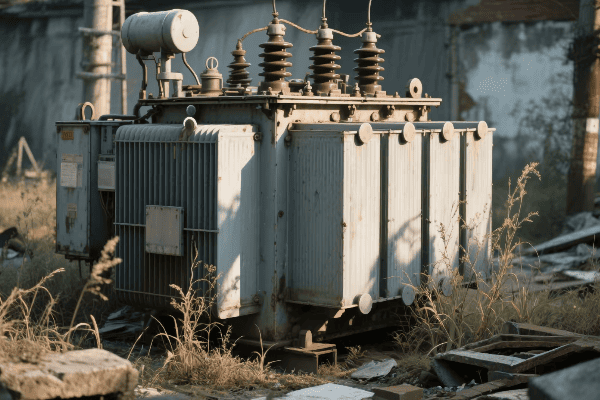
Let’s explore the key innovations addressing rural power distribution challenges:
Weather-Resistant Construction
Standing up to nature’s fury:
- Reinforced housing to withstand high winds and ice loads
- Corrosion-resistant materials for coastal and high-humidity areas
- Enhanced insulation for extreme temperature variations
Wildlife Protection
Coexisting with local fauna:
- Animal guards to prevent climbing and nesting
- Insulated bushings to reduce wildlife-related short circuits
- Avian-friendly designs to minimize bird collisions
Remote Diagnostics and Self-Healing
Minimizing the need for on-site interventions:
- Built-in sensors for continuous health monitoring
- Automatic fault detection and isolation capabilities
- Self-reconfiguring systems to restore power quickly
Modular and Scalable Designs
Adapting to changing rural needs:
- Easy-to-upgrade components for growing power demands
- Plug-and-play modules for quick installation and replacement
- Compatibility with various voltage levels and configurations
Off-Grid and Microgrid Support
Enabling power independence:
- Ability to operate in islanded mode during main grid outages
- Integration with local renewable energy sources
- Energy storage management for consistent power supply
| Rural Challenge | Innovative Solution | Impact on Power Distribution |
|---|---|---|
| Extreme Weather | Reinforced Construction | Increased uptime during storms |
| Wildlife Interference | Protective Barriers | Reduced outages from animal contact |
| Limited Access | Remote Diagnostics | Fewer maintenance visits required |
| Changing Demands | Modular Design | Easy adaptation to growth |
| Unreliable Main Grid | Microgrid Capabilities | Enhanced local energy resilience |
I remember a project in a remote mountain region plagued by frequent lightning strikes. We installed pole transformers with advanced surge protection and self-healing capabilities. The change was remarkable. During the next storm season, the area experienced zero lightning-related outages. A local business owner told me, "For the first time in years, we didn’t have to shut down during thunderstorms. It’s been a game-changer for our operations."
Another challenging case was in a wildlife-rich area where animal interactions frequently disrupted power. We implemented transformers with comprehensive wildlife protection features. Within a year, animal-related outages dropped by 80%. A conservation officer remarked, "It’s great to see technology that not only improves power reliability but also protects our local wildlife."
These experiences have taught me that innovative pole transformer designs are crucial for overcoming the unique challenges of rural power distribution. By addressing specific issues like extreme weather, wildlife interference, and limited accessibility, these transformers are not just delivering electricity; they’re providing reliability and peace of mind to rural communities. As we continue to refine these designs, we’re not only improving power distribution but also enhancing the quality of life in remote areas, making reliable electricity a reality even in the most challenging environments.
Efficiency at Height: Maximizing Performance of Elevated Smart Grid Components?
Ever wondered how we can make those transformers perched high on poles work smarter and more efficiently? The key lies in maximizing the performance of these elevated smart grid components.
Maximizing the performance of elevated smart grid components involves integrating advanced monitoring systems, optimizing energy efficiency, and enhancing remote management capabilities. These improvements ensure that pole mounted transformers operate at peak efficiency, reducing losses and improving overall grid performance.
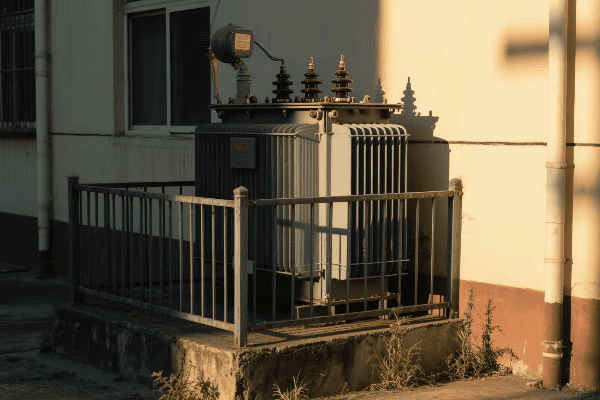
Let’s dive into how we’re boosting efficiency in these high-flying grid components:
Advanced Monitoring Systems
Keeping a constant eye on performance:
- Real-time monitoring of load, temperature, and oil conditions
- Predictive analytics to forecast potential issues
- Integration with smart grid management systems for comprehensive oversight
Energy Loss Reduction
Minimizing waste in power distribution:
- High-efficiency core materials to reduce no-load losses
- Optimized winding designs for lower copper losses
- Improved cooling systems for better heat dissipation
Smart Load Management
Balancing power distribution efficiently:
- Dynamic load balancing across phases
- Automatic tap changing for voltage optimization
- Demand response capabilities to manage peak loads
Remote Diagnostics and Control
Managing transformers from afar:
- Remote access for diagnostics and troubleshooting
- Over-the-air firmware updates to enhance functionality
- Ability to adjust settings without physical intervention
Environmental Adaptation
Optimizing performance in diverse conditions:
- Adaptive cooling systems for varying climate conditions
- Automatic de-icing features for cold regions
- Dust and pollution resistant designs for harsh environments
| Efficiency Feature | Performance Benefit | Impact on Grid Operation |
|---|---|---|
| Advanced Monitoring | Early issue detection | Reduced downtime |
| Loss Reduction | Lower energy waste | Improved overall efficiency |
| Smart Load Management | Balanced power distribution | Enhanced grid stability |
| Remote Capabilities | Quick problem resolution | Reduced maintenance costs |
| Environmental Adaptation | Consistent performance | Reliable operation in all conditions |
I recall a project where we upgraded a rural network with these high-efficiency pole transformers. The utility was skeptical about the investment, but the results were eye-opening. Within the first year, they saw a 15% reduction in distribution losses. The operations manager told me, "We’re not just saving energy; we’re delivering more power to our customers without upgrading our generation capacity."
Another fascinating experience was implementing smart load management in a small town with a large seasonal population fluctuation. The transformers could automatically adjust to the changing demand patterns. During peak tourist season, the grid handled the load surge smoothly without any outages. A local hotel owner remarked, "It’s the first summer we haven’t had to worry about power cuts during our busiest weeks."
These experiences have shown me that efficiency at height is about more than just reducing losses. It’s about creating a smarter, more responsive power distribution system that can adapt to changing conditions and demands. By maximizing the performance of these elevated components, we’re not just improving the efficiency of individual transformers; we’re enhancing the overall resilience and capability of the entire grid. This approach is crucial for creating sustainable, reliable power systems that can meet the evolving needs of rural communities while minimizing waste and operational costs.
Future-Ready Rural Grids: Pole Transformers as Catalysts for Countryside Modernization?
Have you ever imagined a future where rural areas have power systems as advanced as big cities? Pole transformers are turning this vision into reality, acting as catalysts for countryside modernization.
Pole transformers are catalyzing countryside modernization by enabling smart grid technologies in rural areas. These advanced units support renewable integration, facilitate data-driven grid management, and provide the foundation for future innovations like electric vehicle charging and energy storage systems.
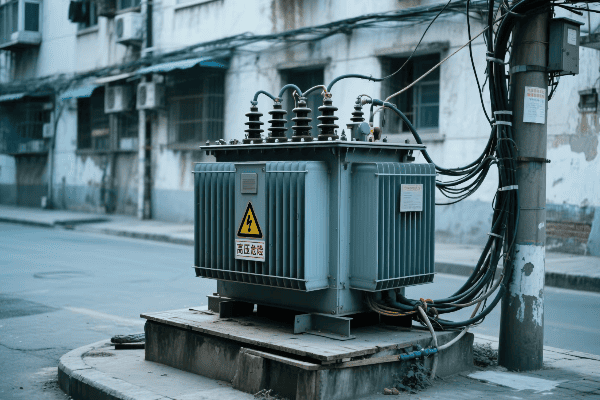
Let’s explore how these transformers are shaping the future of rural power grids:
Renewable Energy Integration
Powering a green rural future:
- Bidirectional power flow management for solar and wind integration
- Smart inverter coordination for stable grid operation
- Microgrid support for local energy independence
Data-Driven Grid Management
Bringing big data to small towns:
- Advanced sensors for comprehensive grid monitoring
- AI-powered analytics for predictive maintenance and optimization
- Integration with smart meters for detailed consumption insights
Electric Vehicle (EV) Charging Support
Preparing for rural e-mobility:
- Load management capabilities for EV charging stations
- Time-of-use pricing support to encourage off-peak charging
- Vehicle-to-grid (V2G) readiness for future energy storage applications
Energy Storage Integration
Balancing supply and demand:
- Compatibility with battery storage systems
- Peak shaving and load shifting capabilities
- Enhanced grid resilience during outages
IoT and Smart City Technologies
Enabling connected rural communities:
- Support for smart street lighting and traffic management systems
- Integration with agricultural IoT devices for smart farming
- Backbone for rural broadband and 5G network deployment
| Modernization Aspect | Traditional Rural Grid | Future-Ready Rural Grid |
|---|---|---|
| Energy Sources | Centralized, fossil-fuel based | Distributed, renewable-integrated |
| Grid Management | Manual, reactive | Automated, predictive |
| Vehicle Support | Basic electricity supply | EV charging infrastructure |
| Energy Storage | Limited or none | Integrated battery systems |
| Connectivity | Basic power distribution | IoT and smart technology enabler |
I remember a project in a forward-thinking rural community that wanted to become a model for sustainable living. We installed advanced pole transformers capable of integrating solar power and supporting EV charging. Within a year, the town had increased its renewable energy usage by 200% and saw a surge in EV adoptions. The mayor proudly told me, "We’re not just keeping up with cities; we’re setting the pace for green energy adoption."
Another eye-opening experience was in a farming region embracing precision agriculture. The smart pole transformers we installed not only provided reliable power but also served as nodes for an IoT network. Farmers could now monitor soil conditions, automate irrigation, and optimize crop yields. A tech-savvy farmer remarked, "These transformers aren’t just powering our equipment; they’re powering a whole new way of farming."
These experiences have shown me that pole transformers are more than just components of the rural grid; they’re the foundation of a modernized countryside. By enabling smart grid technologies, supporting renewable energy, and facilitating advanced applications, these transformers are bridging the gap between rural and urban infrastructure. They’re not just bringing power to remote areas; they’re bringing the future of energy management and smart technologyto rural communities. As we continue to innovate and deploy these advanced systems, we’re not just electrifying the countryside; we’re empowering it to become a leader in sustainable, efficient, and technologically advanced living.
The role of pole transformers in this rural modernization goes beyond just providing electricity. They’re becoming the nervous system of a new, smarter rural infrastructure. By supporting technologies like IoT, smart agriculture, and advanced energy management, these transformers are helping to create vibrant, connected rural communities that can compete with urban areas in terms of quality of life and economic opportunities.
As we look to the future, the potential for further advancements is exciting. We might see pole transformers integrating more advanced AI for even smarter grid management, or supporting new technologies we haven’t even imagined yet. The key is that by building this flexible, future-ready infrastructure now, we’re setting up rural areas to adapt and thrive in whatever the future may bring.
Conclusion
Pole mounted distribution transformers are revolutionizing rural electrification by integrating smart grid technologies, overcoming unique challenges, maximizing efficiency, and catalyzing countryside modernization. They are key to creating resilient, sustainable, and technologically advanced rural power systems.
Free CHBEB Transformer Catalog Download
Get the full range of CHBEB transformers in one catalog.
Includes oil-immersed, dry-type, pad-mounted, and custom solutions.
Quick Message
Request A free quote
We'd like to work with you
- +86 15558785111
- [email protected]
- +86 15558785111
What We Do
CHINA BEI ER BIAN (CHBEB) GROUP, with 218 million in registered capital, originated from Beijing Beierbian Transformer Group. Headquartered in Beijing for R&D, it operates major production bases in Nanjing and Yueqing, producing high-quality products.
Latest Product
address
BeiJing
No 3,RongJing East Road,BeiJing Economic Technological Development Area,BeiJing,China
JiangSu
No 7️Xiangfeng Road,Jiangning,NanJing,JiangSu,China
WenZhou
No.211, Wei 16 Road, Industrial Zone, Yueqing, Wenzhou, Zhejiang, China.
XiangYang Industrial Zone ,YueQing,WenZhou,ZheJiang,China
contact us
- [email protected]
- +86 13057780111
- +86 13057780111
- +86 15558785111
Copyright © Bei Er Bian Group


